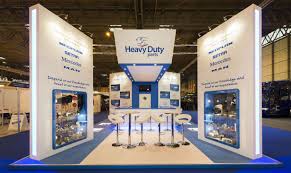Types of Stainless Steel Pipe
A steel alloy and a little amount of chromium combine to form the versatile material known as stainless steel. The addition of chromium increases the material’s resistance to corrosion, which is what gave it its name. Stainless steel is commonly used in a wide variety of applications since it is also low-maintenance, oxidation resistant, and doesn’t impact other metals it comes into touch with, particularly in the fabrication of pipelines and tubing. Stainless steel pipework is divided into a number of groups depending on its intended function.
Stainless Steel 304 Pipes
It can be challenging to discern between pipes and tubes, which are typically distinguished depending on function. Stainless steel is separated by kind and grade in addition to these divisions. Because it is highly chemical- and corrosion-resistant, type 304 stainless steel is a popular choice for piping and tubing applications. However, due to its propensity for carbide precipitation and the material’s.08 percent carbon content limit, Stainless Steel 304 Pipes are not suitable for applications where temperatures range between 800 and 1640 degrees Fahrenheit (F). Due to its lower carbon content limit and ability to withstand welding and higher temperature applications, stainless steel type 304L avoids this issue. It’s common for other varieties of stainless steel to contain additions (such nickel or molybdenum) that accentuate characteristics that are advantageous in particular applications.
Tubing made of stainless steel with general corrosion resistance
This broad category of steel is suitable for uses where corrosion resistance is more important than other characteristics. Steels that contain the greatest chromium (ferritic or martensitic kinds) are produced to either be heat-treated or annealed. High chromium and nickel content austenitic stainless steels provide even higher resistance and can be utilized in the same general applications as ferritic and martensitic kinds.
Pressure Pipe Made of Stainless Steel
Either solid chromium or a chromium and nickel alloy is used to create this sort of stainless steel pipe. Seamless and welded stainless steel pressure pipe, electric fusion welded pipe for high-pressure applications, large diameter welded pipe for corrosive or high-temperature applications, and seamless and welded ferritic and austenitic stainless steel pipe are some examples of the types of stainless steel pressure pipe.
Sanitary Stainless Steel 304 Pipes
Sanitation is a top consideration for applications where stainless steel tubing or piping must come into touch with food and other delicate products. Sanitary tubing made of stainless steel is utilized in these applications because it has a strong resistance to corrosion, doesn’t tarnish, and is simple to maintain. It is possible to acquire a variety of tolerances for various purposes. ASTMA270 is the standard grade for these uses.
Mechanical Tubing Made of Stainless Steel
Stainless steel mechanical tube is frequently used in parts with hollow construction, such as cylinders, bearings, and other hollow shaped components. In addition to the more conventional round tube cross-section, tubing can be altered to have a range of other cross-sectional shapes, including square and rectangular. The most common grades used for mechanical tubing applications are ASTMA 511 and A554.
Aviation stainless steel tubing
Because it is heat and corrosion resistant, stainless steel of the chromium and nickel type is employed in highly specialized aircraft applications. Typically utilized in high-strength applications, stainless steel aviation tubing can be welded or work-hardened, while work-hardened components shouldn’t be used with all types of corrosive materials. For welded items, low-carbon stainless steel varieties are frequently chosen.
Aircraft structural tubing is used for applications that call for seamless and welded tubing in greater diameters (1.6 to 125 mm in outer diameter). This type of stainless steel is produced in accordance with Aerospace Material Specifications (AMS) or Military Specifications (MIL Specs).
helicopter hydraulic line Another type of aviation tubing is tubing, which is typically tiny and utilized in hydraulic and fuel injection systems in aeronautical applications. It is frequently made of stainless steel types 304 or 304 L.





